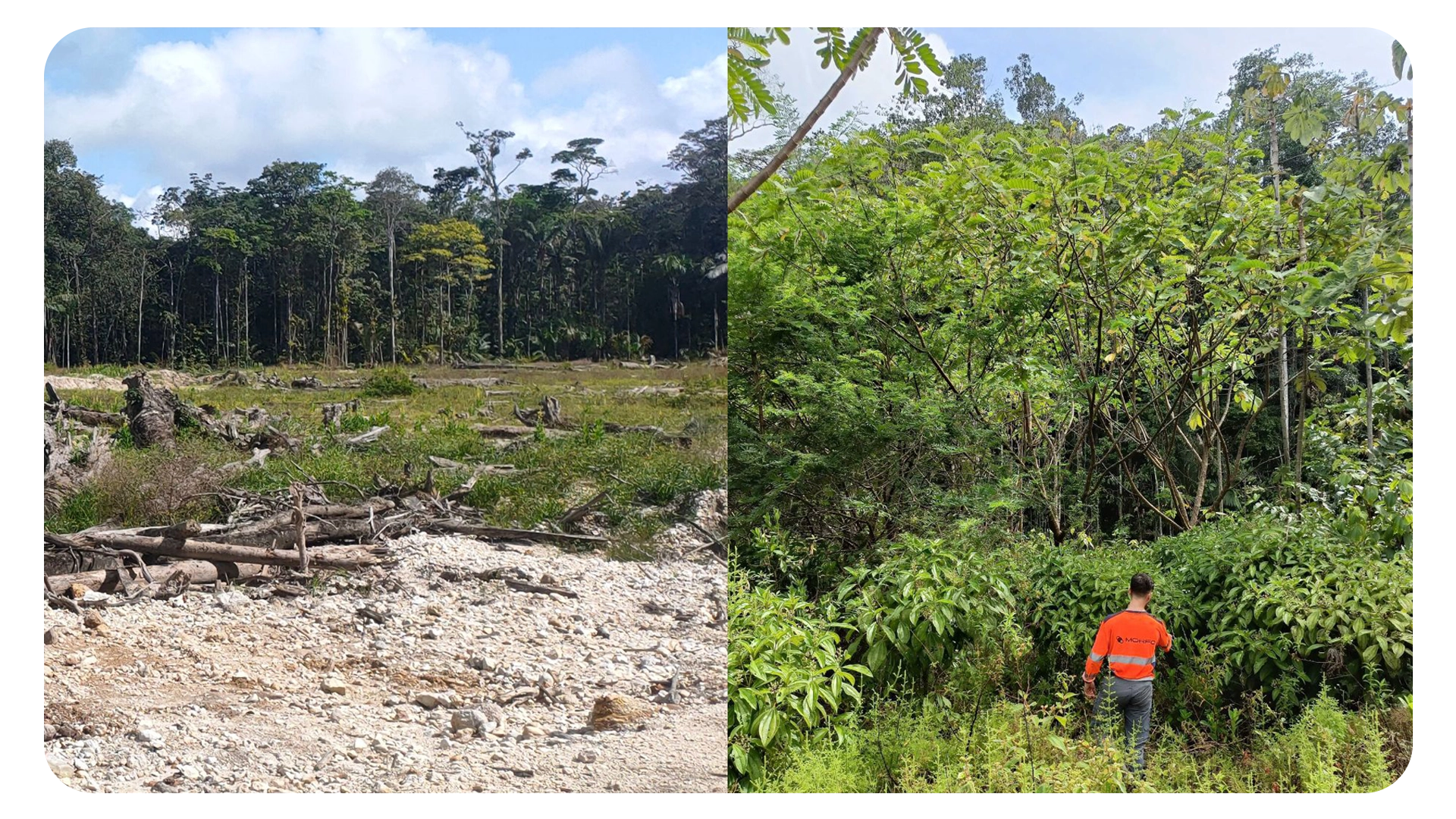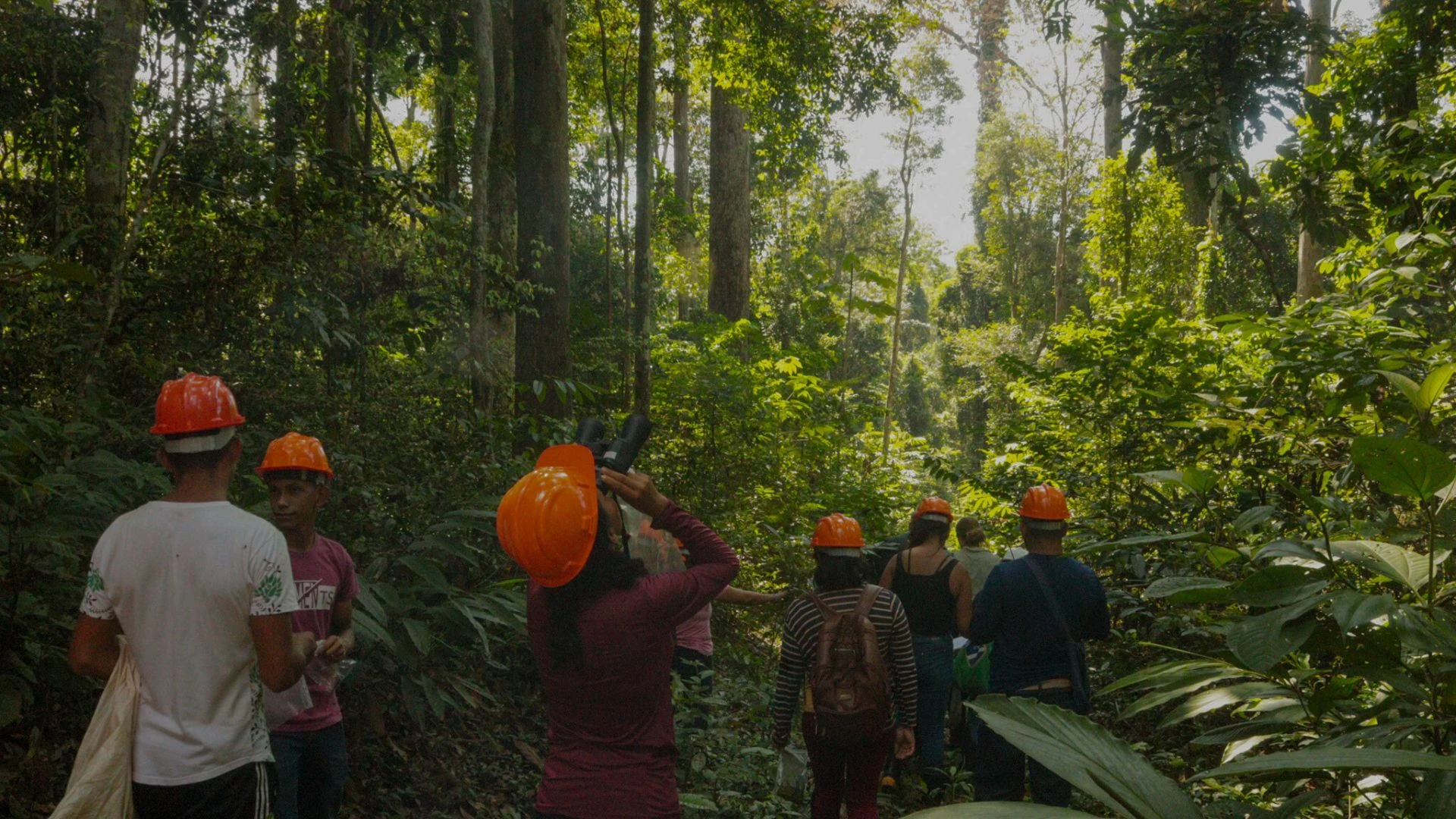MORFO's solution
We restore ecosystems from the ground up, starting with the soil, guided by science
and supported by scalable technology.


FOREST INTELLIGENCE
The best restoration strategy starts with clarity
Before any restoration work begins, our job is to reduce uncertainty — technical, regulatory, and financial.
MORFO’s Forest Intelligence suite provides the insights you need to decide where to act, how to restore, and how to secure regulatory approval with confidence.
Area qualification
Aerial and satellite-based diagnostics help identify and prioritize zones where restoration can deliver high ecological impact with lower operational risk. We integrate land-use history, soil and slope data, and vegetation dynamics to assess each polygon’s feasibility and regulatory alignment.
Result: resources are redirected away from unviable plots and toward hectares with clear, measurable outcomes.
Technology selection
Each landscape requires a tailored combination of restoration methods — from assisted natural regeneration to direct seeding or seedling planting. Our comparative blueprint matches each zone with an appropriate mix of technologies, balancing cost per hectare, regulatory constraints, logistics, and delivery timelines.
Result: optimized implementation costs, predictable delivery, and reduced regulatory risk.
Compliance masterplan
Regulatory uncertainty is a major source of delay and risk in restoration projects. Our team develops a clear, audit-ready compliance roadmap that defines applicable methodologies, acceptance criteria, and evidence requirements — before field implementation begins.
Result: smoother permitting processes and reduced uncertainty during audits.
PRAD elaboration (only in Brazil)
Our environmental engineers and forest specialists prepare comprehensive PRAD documents, aligned with current Brazilian regulations and regulatory expectations. Each plan integrates zoning, target species, technical justifications, and monitoring strategies, structured for formal submission and review.
Result: strengthened regulatory compliance, reduced exposure to penalties, and clear demonstration of environmental responsibility.

FOREST OPERATIONS

From design to delivery, with the right method for each terrain.
Once the restoration plan is defined, MORFO implements field operations using a calibrated combination of human expertise and technology.Field teams, drones, and proprietary seedpods enable the execution of restoration activities across large, complex, or remote areas, while adhering to biodiversity objectives and applicable regulatory requirements.
SOIL REGENERATION
Before planting activities begin, MORFO focuses on restoring soil functionality — a critical foundation for long-term forest recovery. Soil regeneration protocols combine drone-based mapping, microbial analysis, and targeted interventions (such as mulching, mycorrhizal inoculation, and erosion control) to support soil structure and fertility recovery.
Result: improved seedling establishment, reduced maintenance intensity over time, and increased ecosystem resilience.
Forest plantations for compliance
We deliver restoration projects aligned with PRAD or TAC regulatory obligations, covering land preparation, implementation, maintenance, and reporting. Operations are structured to ensure traceability at each stage, in line with regulatory requirements and corporate audit frameworks.
Result: regulatory compliance supported by documented processes and verifiable evidence throughout the project lifecycle.
Forest plantations for carbon projects
For investors and companies pursuing forest-based carbon projects, MORFO implements restoration of native and mixed forests designed to support biodiversity and long-term carbon permanence. Projects integrate community participation, site-adapted species selection, and structured monitoring frameworks to support credible and certifiable outcomes.
Result: carbon credits supported by ecological integrity, social engagement, and transparent monitoring processes.
FOREST PERFORMANCE
Because what gets measured, gets approved.
Restoration does not end at planting. Long-term success depends on a forest’s ability to grow, adapt, and persist over time. MORFO’s Forest Performance suite supports continuous verification of forest health, performance, and compliance — year after year.
Multi-year forest growth analysis
Using drones, satellites, and field surveys, we monitor forest evolution over time — including canopy closure, species survival, biomass, and biodiversity indicators. Analytical models identify trends and deviations early, supporting proactive management and adaptive decision-making.
Result: a data-driven view of forest performance that supports audit readiness and investor confidence.
Corrective actions
When specific areas underperform, MORFO implements targeted corrective actions — including replanting, seedpod gap-filling, invasive species control, and soil amendments.
Result: reduced rework costs and improved performance consistency across the portfolio.
Compliance reporting
All results are consolidated into an audit-ready reporting package, integrating technical data, drone imagery, and dashboards that track progress against PRAD, TAC, ESG, and carbon-related requirements.
Result: transparent, regulator-ready documentation supporting compliance and impact assessment.
Long-term stewardship plan
Our team supports long-term (10–20 years) adaptive forest stewardship planning, integrating risk registers, financial models, and community agreements.
Result: a restoration outcome that remains operationally and economically viable beyond project timelines.

All Your Forest Data in One Integrated Platform
DASHBOARD
MORFO’s customers and stakeholders have direct access to a project dashboard, providing transparent, traceable data, imagery, and reports.
This enables real-time performance tracking, adaptive management, and continuous monitoring, supporting measurable impact and long-term project value.
.webp)
FREQUENTLY
ASKED
QUESTIONS
MORFO’s soil regeneration solution is based on a science-driven approach that integrates soil diagnostics, seedpods, artificial intelligence, and drone technology.This integrated methodology restores soil fertility, supports biodiversity recovery, and enables long-term, measurable ecosystem regeneration.
Drones are a tool for scaling up forest restoration on two levels:
>Forest analysis and monitoring
Before planting, we use a variety of analysis methods to study the soils and characteristics of the area to be reforested. Some of these analyses include satellite imagery to obtain an overview of the area, and drone imagery with a more precise resolution for detailed information.
Data is then combined with our species catalog established to produce a planting scheme. Drones are used to geolocate species present before and after planting, enabling us to differentiate between different forest strata and accurately monitor vegetation growth.
>Drone seeding
We use custom agricultural drones capable of lifting fairly substantial loads and dispersing unique seedpods that we have developed with public laboratories and scientists. These drones are large, around 1.50 meters in diameter.
Seeds are deployed using protective seed capsules designed to support early establishment in degraded environments. These capsules contain biological and nutritional elements that help seeds withstand field conditions and support early growth.
Seedpods offer three main advantages:
– Seed protection: capsules shield seeds from external stressors, preserving viability.
– Early-stage nutrition: capsules provide nutrients that support seedlings during initial development.
– Soil regeneration support: the method contributes to improving degraded soil conditions and overall ecosystem recovery.
MORFO conducts continuous R&D through in-house laboratories and research partnerships to select the most suitable species for each project. Our catalog includes over 600 native species studied or under evaluation, selected based on a minimum set of ecological and operational criteria.
During laboratory and nursery phases, MORFO observes average survival rates of around 80%, depending on species. Field performance varies according to site conditions, and ongoing monitoring is used to progressively improve restoration outcomes over time.
We pay particular attention forest growth and health by monitoring biomass, biodiversity, and carbon stocks, though in-depth regular analyses. This helps us diagnose any issues or low success rates so that they can be resolved, for example through future planting.
MORFO uses many tools to carry out accurate and regular monitoring: drone and satellite imagery, artificial intelligence, on-the-field analyses, and more.
MORFO reforestation monitoring is regular and long-term. It extends over a period of 5 to 30 years. This period varies according to the complexity and scale of the project, as well as conservation and preservation objectives.



.webp)